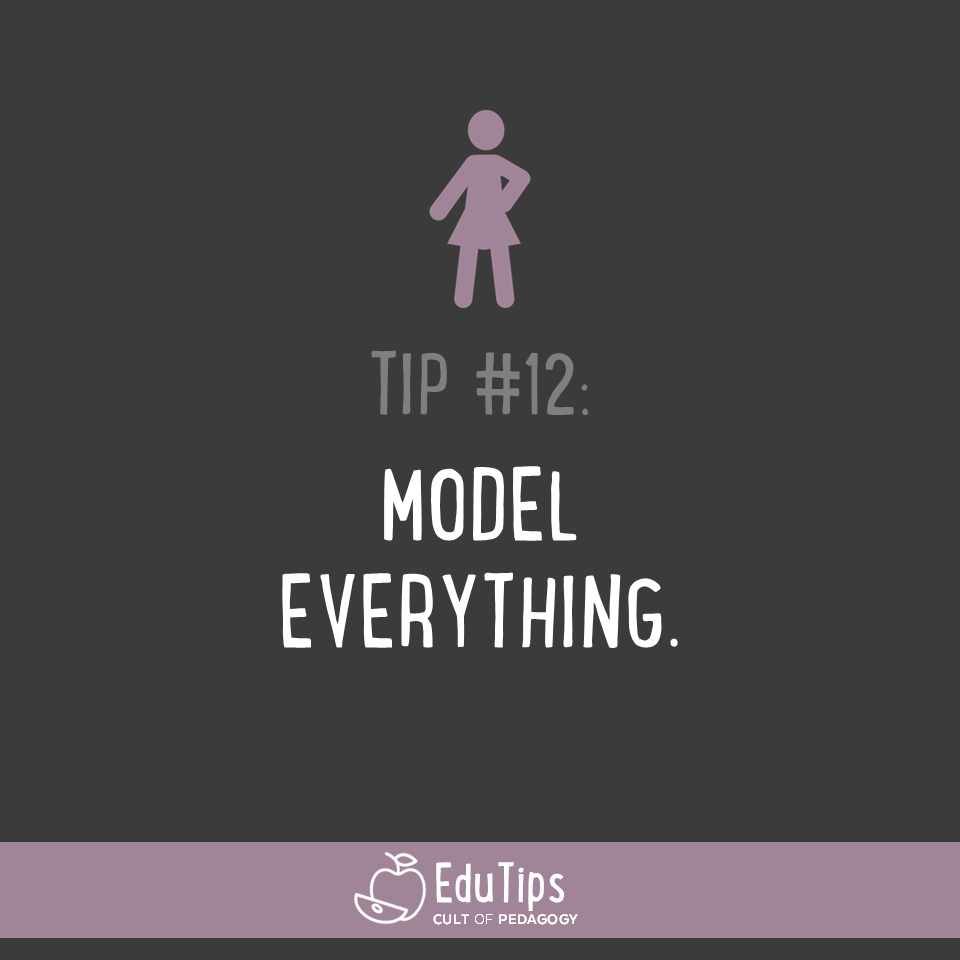Sponsored by Stash101.

Watch a video version of this EduTip on Instagram.
Here’s a situation I found myself in ALL THE TIME as a teacher: I would plan some kind of task for students—say it was something pretty standard, like working in pairs to complete a graphic organizer from some text we were reading.
And we’d get started, and I’d walk around the room, and some students would be doing it the way I’d pictured it in my mind—the size and neatness of their writing, the amount of writing they put into the organizer, even how they were working, with both partners contributing their thoughts, coming to a consensus, then writing the stuff down.
But other pairs? Not so much. Some were writing HUGE letters in the organizer, so it took almost nothing to fill each cell. Some were writing long, complete sentences that overflowed each cell. Some seemed to be fighting over the organizer, snatching it back and forth to write different things. Others just kind of sat there, saying they didn’t get it.
Had I just modeled the process, things would have gone way better. Before ever putting one of those organizers in students’ hands, I should have put an example up on the projector and showed students how to fill it out. I could have presented another one already filled out for another text. I even could have pulled a volunteer up from the class to sit beside me and demonstrate how we would talk to each other while working on the organizer, checking to make sure we came to some kind of agreement before we wrote anything down.
There are so many things we ask our students to do in school that they would do so much better if we just modeled it for them. While modeling is already probably a strategy you’re using to teach some concepts, you probably could be using it a whole lot more, and getting more from your students as a result.
Here are just a few ideas for things that would probably go much more smoothly with a little bit of modeling:
- Classroom procedures: Everything from walking to and from the pencil sharpener to charging a laptop can be demonstrated physically, and ideally, it should be done with an almost comical level of detail. If you’ve ever found yourself frustrated because the kids in your class “should know how to do this,” chances are a demonstration is in order. The same goes for any lesson that involves using equipment or other hands-on materials—starting with a quick, physical demonstration (NOT just a verbal explanation) before releasing students to get started can save you so much hassle later.
- Group dynamics: Just because students know how to talk and socialize doesn’t mean they have well-developed collaboration skills. Anytime you’re going to put students in groups or pairs, model predictable scenarios that might happen—one person not participating enough, for example—and demonstrate how students can handle it effectively. Do a little skit, even. It will go a long way.
- Reading: Students who struggle with reading don’t realize all the thinking that goes on in the mind of a proficient reader, so occasionally reading through a text and stopping to think aloud—to ask questions, notice misunderstandings, and go back to reread—can pull back the curtain on this process and help other readers learn how to do it.
- Writing: Modeling works for writing in so many ways. One obvious one is showing students examples of finished work—if they don’t have any idea of what a finished product looks like in a particular genre, their efforts to get it right will be mostly based on guesses. Another way is by modeling the writing process for students: Just like with reading, students who are not confident writers tend not to understand how messy the writing process really is, so if you want them to write well, write with your students and show them how you go from draft to finished product.
- Basically any assignment at all: Whether it’s a worksheet, a slideshow, an essay, even a quiz, you’ll get much more consistent work from students if you show them models of completed tasks—good ones to show them what to do, and other examples that demonstrate common pitfalls, so they know what to avoid.
See all EduTips here.

Modeling is teaching 101. I just think some times you forget it, thinking ALL the kids understand the task when they don’t. Modeling also needs to be adapted to all your learners in your room.
I like this. I will come back to it often. Thanks.
Glad you found it helpful, Mary!